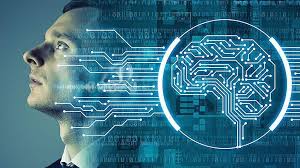Introduction to the AI Art Revolution
The emergence of artificial intelligence in the world of art has sparked a riveting debate: Can AI paint better than human artists? This question challenges our traditional understanding of creativity and artistic expression. With AI systems now producing works that are sold in galleries and auctioned for substantial amounts, the conversation has shifted from a theoretical possibility to a tangible reality.
Technical Precision vs. Emotional Depth
AI systems, equipped with algorithms that analyze and replicate styles from vast databases of historic artwork, excel in technical precision. They can recreate any style, from Renaissance classics to modern abstracts, with astonishing accuracy. For instance, AI programs have been trained to mimic the brush strokes of Van Gogh or the surreal imagery of Dalí with a level of detail that is indistinguishable from human work to the untrained eye.
However, art is not just about precision or the ability to replicate styles. Human artists bring their personal experiences, emotions, and subconscious nuances to their work—qualities that AI has yet to fully emulate. The depth of a human-painted artwork, infused with the artist’s emotional and contextual layers, often resonates more profoundly with audiences.
Innovation and Learning Capabilities
One of the significant advantages of AI in painting is its ability to learn and adapt quickly. AI can analyze thousands of images, learn styles, and experiment with new techniques much faster than a human. For example, some AI programs have developed unique styles by blending multiple periods of art history, creating fascinating, novel artworks that challenge traditional aesthetics.
Yet, while AI can generate countless iterations and mix influences at an unprecedented scale, the spontaneity and intuitive leaps that human artists make are not something AI can easily replicate. Human creativity often involves breaking away from established patterns, an area where AI is still catching up.

The Market's Response
The art market's response to AI-generated paintings offers insights into their perceived value. In recent years, AI-created artworks have been auctioned for hefty sums. One notable sale included an AI painting that fetched over $400,000, a clear indication that there is market demand and appreciation for such works.
Public and Critical Reception
Public and critical reception of AI art varies. Some view AI art as a gimmick, while others see it as the next evolution in the creative arts. Exhibitions featuring AI art have drawn significant attention, enabling a broader discourse on what constitutes art and the role of the artist.
Explore More on AI and Human Art
For further exploration into the fascinating world of AI-generated versus human-created art, visit AI or Human.
Conclusion
Whether AI can paint better than humans depends largely on the criteria used to judge the artwork. If technical skill and the ability to learn and replicate various styles quickly are the measures, AI certainly excels. However, if art is viewed as an expression of human experience and emotional depth, human artists may hold an edge. As AI technology evolves, it will continue to reshape the art world, challenging our perceptions of creativity and the essence of art itself.